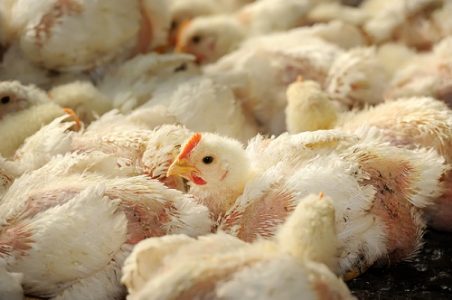Selective Breeding Definition
Selective breeding is the process by which humans control the breeding of organisms in order to exhibit or eliminate a particular characteristic. Selective breeding uses artificial selection to direct the genetic transfer of desirable traits. As opposed to natural selection, selective breeding focuses on traits which will benefit humans.
Selective Breeding Overview
The procedure involves identifying certain desirable features and finding two members of a species that exhibit the particular feature. A series of matings or breedings is then performed between the individuals with favored features to produce offspring that exhibit the feature and that can be used for future matings. The desirable phenotypic traits are passed from parents to offspring via their genes.
Although selective breeding can increase the prevalence of desirable traits by increasing the frequency of favorable genes within the gene pool, undesirable traits, which can cause hereditary health problems, can also increase as a consequence of inbreeding.
The term ‘artificial selection’ was first coined by Charles Darwin in his book On the Origin of Species to describe how humans had mirrored the process of natural selection through selective breeding. Darwin recognized that the forces changing population were similar, but instead of the organisms adapting to the environment artificial selection is driven by the needs of humans. Oftentimes, this leads to a decrease in fitness of the organisms because adaptive traits can be ignored.
Selective Breeding Examples
Dogs
All modern dogs have been selectively bred by humans over thousands of years. Dogs were first bred from a common ancestor of the gray wolf (Canis Lupus), which was domesticated by humans with whom it lived in close proximity. It is widely speculated that these animals were first domesticated by humans for hunting and protection, although modern dogs have been bred for a variety of reasons, such as companionship, performing particular tasks, entertainment, or for aesthetic purposes. Today there are over 400 breeds of dog, meaning they have the widest phenotype range of any mammal.
The highly specific traits that are selectively bred into dogs can come at a huge disadvantage to their health. Not only can the lack of genetic diversity within the gene pool lead to hereditary health problems, dogs that are bred with deliberately accentuated physical features can suffer from their unnatural physical form. For example, bulldogs and other ‘flat-faced’ breeds can suffer from breathing problems, while large dogs commonly suffer from bone tumors due to their excess body weight.
Plants and Livestock
Almost all of the food consumed by modern humans has been selectively bred over thousands of years. Around 10,000 years ago when humans began living in permanent or semi-permanent settlements, they started to cultivate their own crops and herd flocks of livestock for the first time.
Selective breeding in plants started the selection of fruits and vegetables for qualities such as large size and sweetness unconsciously; the seeds of plants with the desirable qualities would have been given the chance to germinate through human consumption and cultivated within their latrines (toilets). Over time, other favorable qualities, such as oil content, seedlessness, and fleshy texture were all altered, leaving many human-cultivated fruit and vegetables unrecognizable against their wild counterparts. The same process occurred with domesticated animals such as sheep (bred for thicker wool), chickens (considerably larger than their wild ancestors), and cattle (bred for more muscle mass or increased milk yield).
One of the oldest and most widely documented examples of selective breeding for food is the selection of tall growing (for easier harvesting), disease resistant wheat, which yields large amounts of grain. Historically, smaller crops were removed from fields, allowing bees and other pollinators to pollinate only the crops with the most human-favored characteristics. Today, the breeding of wheat is a more scientific process; individuals with specific genes are identified and bred to create plants that have improved nutritional content, more intense flavors, and require less fertilizer or pesticide applications.
Culling
Culling is a form of selective breeding. Rather than breeding two animals that display favorable traits, animals with undesirable traits (such as aggressive behavior) are removed from a population. Culling can be performed either by killing the individual or by spaying/neutering in order to prevent reproduction. The animals which are left in the population go on to reproduce, whilst genes controlling for the undesirable traits are removed from the population.
Hunting
Selective breeding is not always beneficial to humans. Outside of biology, selective breeding is accidentally practiced. Poachers, who hunt and kill rhinoceros and elephants for valuable rhino-horn and ivory, have in recent years caused unintentional selection for animals with smaller horns and tusks. As the males with the largest horns are the most desirable to hunters, the genes that control for size are being rapidly removed from the population.
Additionally, a gene mutation which results in elephants with no tusks at all is increasing within populations. With population numbers greatly reduced due to hunting pressure, it is possible that elephant tusks could disappear entirely. This is an example of the effect that pressures of modern human populations have on wildlife.
Quiz

